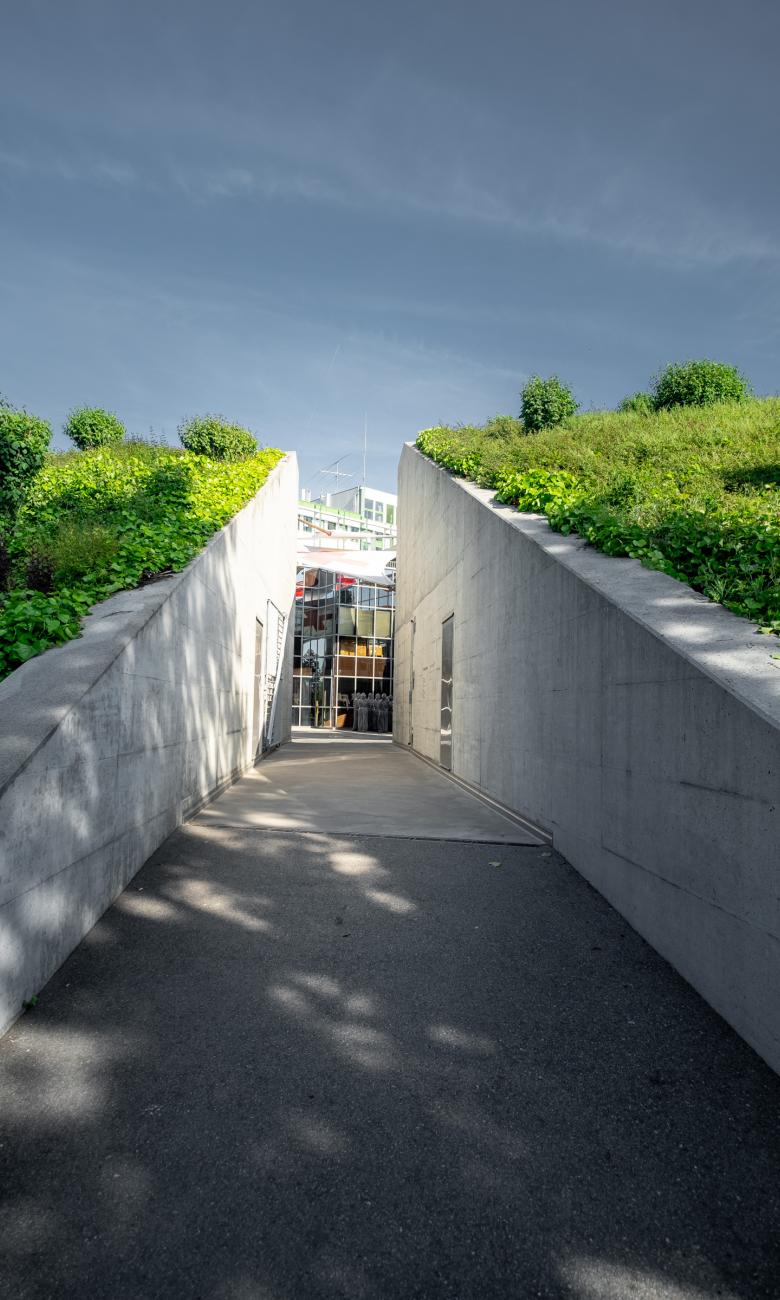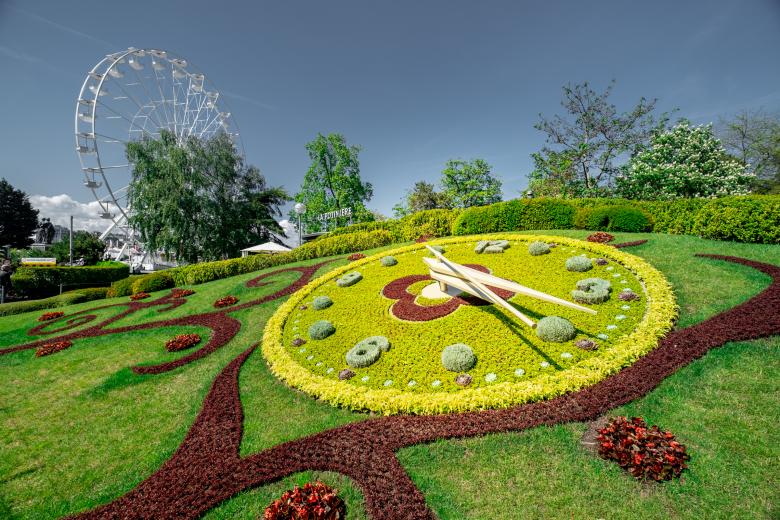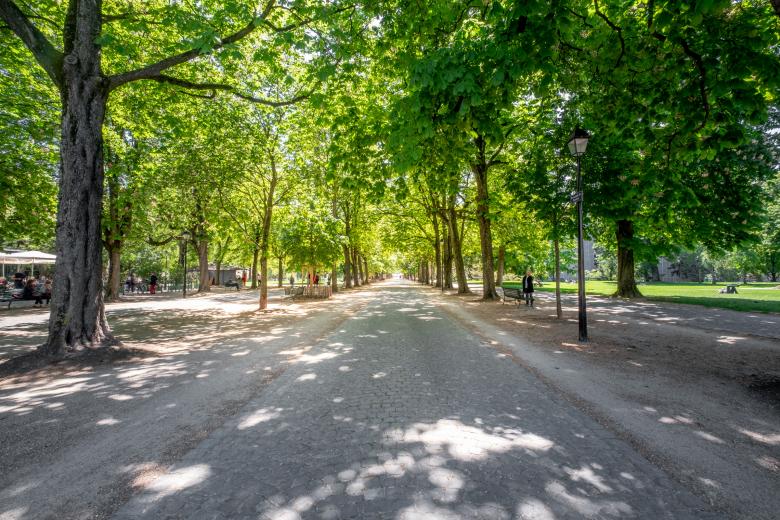Swiss cities: swapping concrete for greenery
With the introduction of living roofs, pocket parks and flower meadows, Swiss cities such as Geneva and Lausanne are using urban nature to help deal with climate change.
Switzerland's towns and cities are overheating. The heatwaves in recent years are a stark reminder that cities and global warming do not mix. And according to the CH2018 report, if we cannot reduce greenhouse gas emissions, our typical summer by 2050 will be marked by prolonged dry spells interspersed with torrential rainfall.
This presents a huge challenge for cities, where poor air circulation, lack of shade and high levels of greenhouse gas emissions combine to create 'urban heat islands'. The resulting microclimate in a town can be anywhere from 5 to 10°C higher than in the surrounding countryside. In times of heatwave, this can have a critical impact on the health and well-being of city dwellers. The solution, it would appear, is to let nature reclaim its place among the concrete sprawl.
All over Switzerland, more and more greenery is being integrated into urban planning in an effort to halt the impact of global warming. Bringing more nature into cities is one way to counter the heat-island effect, improve air quality, retain soil water, create sustainable living spaces and protect biodiversity. Not to mention it makes the streets look better. Fortunately there are many ways we can bring nature into our cities.

Geneva's 'green network'
Hemmed in by mountains on the French border and its eponymous lake, Geneva has taken a scattered approach and developed a range of pocket parks across the city. Although a third of public land was already green, this was very uncoordinated. The city's focus now is on reclaiming unbuilt spaces, one square metre at a time. And where the concrete cannot be moved, giant plant pots have been installed.

© Presence Switzerland
Geneva's strategic greening plan launched on July 2019 sets the parameters for the city's 'green network'. Guillaume Barazzone from the administrative council, and initiator of the Urbanature programme, is delighted that this milestone has been reached. "It's no longer just about building non-stop: now we also have to make room for nature." He estimates Geneva will have to invest up to CHF 100 million over the next 15 years to meet its greening objectives.
Trees from southern Europe
Trees growing along a street can lower the ambient temperature by an average of 2°C, but it takes a good 20 years for the trees to reach their full potential. With this in mind, the city of Geneva is planning ahead for a warmer future. According to the CH2018 report, we can expect temperatures to rise by an average of 1.8 to 3.3°C in the winter and 2.3 to 4.4°C in the summer. This will make it difficult for native species to thrive here. To preserve its 'green lungs', Geneva has therefore started planting other trees better adapted to climate change, such as the hackberry tree, a species native to southern Europe.

© Presence Switzerland
Taking to higher ground in Lausanne
Lausanne has 26m2 of urban green space per inhabitant. With Lake Geneva to the south and the Jorat forest to the north, the city already has a natural heat regulator. But as in any urban area, micro-heat islands tend to build up, accentuating the effects of higher temperatures. Thus, in 2015, Lausanne launched a programme to finance the creation of green (or living) roofs. With some 2,000 flat roofs in the city, this approach has great potential. Subsidies of up to CHF 650,000 are available for private buildings, with up to CHF 500,000 for public roofs.

© Presence Switzerland
Choosing the right plants for a rooftop garden can help to retain soil water, particularly in times of high rainfall. "Plants use the moisture in the roof substrate to grow and, through transpiration, water is then evaporated into the air – much-needed in summer. So a diverse, dense foliage on the roof helps cool down the air," explains Natacha Litzistorf, head of Lausanne's department of housing, the environment and architecture. You just need to go a little higher up to see the plan in action. In future years, Lausanne will act like a sponge, soaking up water from the soil and vegetation to cool down the air.
Federal government pilot programme
The cities are not alone in bringing nature closer to home. To support them, the Federal Office for the Environment (FOEN) has launched its Adaptation to climate change programme to fund pioneering projects on issues such as rising temperatures in urban areas. For example, this pilot programme has enabled Sion to incorporate vast green spaces into its urban fabric. It has also supported private projects to redesign the city's many privately owned open spaces just waiting to be covered in plants.
Translation of an article originally published in Le Temps – Noémie Pralat
© Main image: Benoît Renevey / naturecommunication.ch




